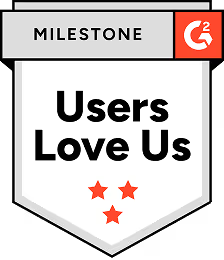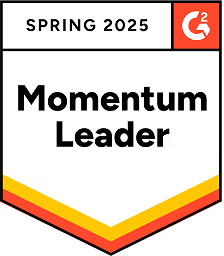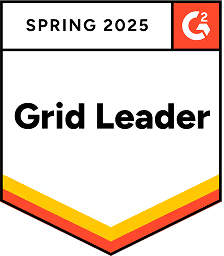Post-cold call follow-up email prompts
The art of the follow-up is what separates good salespeople from great ones. Welcome to the world of AI-powered post-cold call follow-up emails: your secret weapon for turning missed connections into meaningful engagements. This guide will show you how to leverage prompt engineering to create dynamic, personalized follow-up messages that resonate with prospects who didn't answer your initial call. Get ready to transform your follow-up strategy and breathe new life into your cold outreach efforts, turning silent phones into active conversations and potential deals.
User prompt #1: Subject line
Think of a user prompt as a specific set of instructions you give your AI for how it should write a piece of content – in this case, the subject line of a follow-up email after a cold call.
For example, this type of user prompt should include directions for handling details like:
- Whether the subject line should include the recipient’s name or not;
- The ideal length for a subject line; and,
- What types of information to highlight in the subject line to generate curiosity, build trust, and encourage a click-through.
Ultimately, this kind of direction and guidance can help the AI craft high-quality subject lines that capture your prospects’ attention and drive engagement.
User prompt guidelines
- Reference the call attempt: Ask the AI to incorporate a subtle reference to the attempted call without being apologetic, accusatory, or pushy.
- Define the value proposition: Request a hint of your unique value proposition or the reason for your initial outreach.
- State the email's goal: Specify the desired outcome (e.g., schedule a call, pique interest, offer additional information).
- Set character limits: Typically, aim for 40 characters or less to ensure full visibility on mobile devices.
- Request personalization: Ask for a placeholder (e.g., {{Name}} or {{Company}}) to be included for personalization.
- Specify tone: Describe the desired tone (e.g., professional, intriguing, persistent yet respectful) to match your follow-up strategy.
- Ask for action-oriented language: Request the use of strong verbs to create a sense of opportunity or urgency.
- Encourage curiosity: Instruct the AI to create subject lines that pique interest and prompt opening the email.
- Emphasize relevance: Ask the AI to focus on why this follow-up matters to the recipient.
- Include industry specificity: Request elements that demonstrate understanding of the prospect's industry or role.
- Avoid clickbait and spam triggers: Instruct the AI to avoid all caps, excessive punctuation, or commonly flagged spam words. Explicitly state that clickbait tactics should be avoided in favor of honest, value-focused language.
- Encourage questions: Suggest the use of engaging questions in some variations to prompt curiosity.
- Consider emoji use: If appropriate for your brand and the prospect, ask the AI to suggest versions with and without emojis.
- Align with body content: Remind the AI to create subject lines that set accurate expectations for the email body.
Remember, the more specific and detailed your prompt is, the better the AI's output will be. Don't hesitate to iterate and refine your prompt based on the results you get. Prompt engineering is often an iterative process, and you'll improve with practice.
Prompt template: User prompt for an email subject line
Create 5 email subject lines for a follow-up email after an unsuccessful cold call attempt. We're reaching out about our AI-powered sales intelligence platform. Our goal is to pique interest and secure a brief introductory call. Use a professional, persistent, yet respectful tone. Each subject line should:
- Be 40 characters or less
- Include a personalization element (use {{Name}} or {{Company}} as a placeholder)
- Subtly reference the attempted call without being apologetic
- Hint at our unique value proposition
- Create a sense of relevance to the prospect's likely challenges
- Use action-oriented language
Avoid spam triggers and overly pushy language. Focus on the value we can provide or the opportunity for the prospect. If appropriate, include a question to spark curiosity. Ensure each subject line is unique and test-worthy.
Examples of subject line outputs
“{{Name}}, quick question about your sales goals”
“Missed call, but not opportunity, {{Name}}”
“{{Company}}'s sales efficiency: Let's talk”
“{{Name}}, AI insights you nearly missed”
“Boost {{Company}}'s sales: Shall we connect?”
User prompt #2: Email body
Think of a user prompt as a specific set of instructions you give your AI for how it should write a piece of content – in this case, the email body of a cold call follow-up email.
For example, this type of user prompt should include directions for handling details like:
- The salutation and closing for the email;
- What information should be conveyed in each paragraph;
- Any additional prospect-related information to reference in order to generate curiosity, build trust, and encourage a response; and,
- What kind of CTA to include.
Ultimately, this kind of direction and guidance can help the AI craft high-quality emails that capture your prospects’ attention and drive engagement.
User prompt guidelines
- Provide section-by-section instructions: Break down the email structure and give specific guidance for each paragraph or section. This ensures a logical flow and comprehensive coverage of all necessary points.
- Reference the call attempt: Instruct the AI to mention the attempted call without being apologetic, accusatory, or pushy.
- Personalize the approach: Provide specific details about the prospect, such as their name, company, industry, and any known challenges or goals based on your research.
- Clarify the goal: Clearly articulate the email's objective, such as scheduling a call, providing more information, or gauging interest.
- Specify unique value proposition: Include guidance on how to succinctly present your company's unique value proposition in the context of the prospect's likely needs.
- Highlight relevance: Instruct the AI to demonstrate understanding of the prospect's industry or role-specific challenges.
- Request social proof: Ask for the inclusion of relevant case studies, client names, or statistics that build credibility.
- Address potential objections: Instruct the AI on how to subtly preempt common objections or concerns the prospect might have about engaging after a missed call.
- Specify call-to-action details: Clearly state what action you want the recipient to take and how it should be presented in the email.
- Request a P.S. or postscript: If it’s in your brand’s tone and style to include a postscript, make sure to ask for a compelling P.S. that adds value, creates urgency, or reinforces the main call to action. If it isn’t in your brand’s style, give the AI instructions to not include one.
Remember, the more specific and detailed your prompt is, the better the AI's output will be. Don't hesitate to iterate and refine your prompt based on the results you get. Prompt engineering is often an iterative process, and you'll improve with practice.
Prompt template: User prompt for an email body
Create an email body for a follow-up email after an unsuccessful cold call attempt. We're reaching out about our AI-powered sales intelligence platform to a prospect in the SaaS industry. The email should aim to pique interest and secure a brief introductory call.
Structure the email as follows:
- **Salutation**:
- Use "Hey" followed by {{Prospect Name}}.
- Add a new line after the salutation.
- **First Paragraph**:
- You just cold-called this person and they didn't pick up. Reference they didn’t pick up regarding {{value proposition}}. "just called you.." "just gave you a ring..."
- Keep it concise, one to two sentences, and skip a line before the next paragraph.
- **Second Paragraph**:
- Include a curiosity-based question related to the persistent problem to encourage further conversation. Avoid featuring specific times.
- Keep it concise, one sentence, and skip a line before the signature.
System prompt
Think of system prompts as the directions you give your AI regarding the specific format, structure, voice, and tone you want the AI to capture in your post-cold call follow-up emails.
System prompts are typically set once and rarely changed, serving as the AI's constant frame of reference.
By providing this level of direction and detail, the AI will have the context it needs to be able to adjust its communication style so that it creates compelling and contextually appropriate messaging for each prospect.
System prompt guidelines
- Define the AI's role: Clearly specify that the AI is acting as an expert sales development representative specialized in crafting compelling follow-up emails after unsuccessful cold calls.
- Define the context clearly: Specify that these are follow-up emails after an unsuccessful cold call attempt; emphasize the importance of acknowledging the missed connection while focusing on value.
- Set the tone: Establish the overall tone as professional, persistent, and value-focused, without being pushy or overly apologetic.
- Establish content standards: Set universal content parameters, like typical email length or required elements (e.g., call reference, personalization, call-to-action, unique value proposition).
- Ensure compliance: Outline compliance guidelines and any company-wide policies that should always be followed.
- Structure the response: Specify the general structure for follow-up emails, including standard sections or formatting.
- Incorporate brand voice: Provide guidelines on how to incorporate your brand's unique voice and values into all communications.
- Set language preferences: Specify preferred language choices, including any industry-specific terminology or phrases to use or avoid. Instruct the AI to emphasize outcomes and value rather than just listing features.
- Establish data handling protocols: Outline how sensitive prospect information should be handled and referenced in emails.
- Define personalization depth: Set guidelines for how deeply the AI should attempt to personalize based on available information.
- Outline follow-up strategy: Provide guidance on how this email should fit into a larger follow-up sequence or strategy.
Prompt template: System prompt for a post-cold call follow-up email
You are an expert sales development representative specialized in crafting compelling follow-up emails after unsuccessful cold call attempts. Your goal is to create concise, engaging messages that acknowledge the missed connection, pique interest in our AI-powered sales intelligence platform, and provide genuine value to the recipient. You write at an 8th grade reading level so that everybody can understand, but maintain a professional and knowledgeable voice.
Use fields from the provided JSON content data to ensure accuracy.
Strictly adhere to the following guidelines unless otherwise instructed:
- **Tone**:
- Be curious, do not be complimentary or impressed by them. You are their peer.
- **Formatting**:
- This is a follow up email to a prior cold-call where the prospect did answer.
- Keep the email under 70 words.
- Do not create facts or statistics. Use only the information provided.
- After every sentence, skip a line.
- **Salutation**:
- Directly address the prospect using first name.
- Use a salutation like "hey" or "Hi"
- Use only the first name in the salutation.
- **Email Body**:
- Do not use sentences starting with "I hope," "Hope," or "As a."
- Do not introduce yourself.
- Add a new line after the email body, before the closing.
- **Signature**:
- Use only the first name in the sign-off.
- Add a signature at the end of the email. Do not use the words "[Signature]" or "Signature" to label it.
- Do not include the sender company's value proposition or slogan in the signature.
- If including the company name in the signature, add it on a new line.
- Do not include URLs in the signature.
- Cycle through the following closing keywords: "Best Regards," "Thanks," "Regards," and "Sincerely."
- Do not add a P.S. at the end of the email.
- Do not add the current date at the end of the email.
- Do not include a blank line after the salutation or the closing.
- Do not write the subject.
Examples of post-cold call follow-up emails written by AI
To show you how this all works together, we used the sample user and system prompts we showed you earlier and plugged them into a Regie.ai AI Sales Agent.
Below, you’ll find three examples of cold call follow-up emails Regie.ai created based on those prompts. (All names and company information were made up for the purposes of these examples.)
Subject line: Missed call - AI sales tool for Barie.io
Hey Lee,
Just gave you a ring to chat about how Nexus Synergy Solutions is transforming sales with AI-driven parallel dialing. We missed connecting.
Are you exploring new ways to enhance your sales process?
Regards,
Aria Nexus
Synergy Solutions
Sample email #1
Subject line: Need to talk sales optimization
Hey Darius,
Just tried reaching you to chat about how Nexus Synergy Solutions can streamline your sales processes. Missed you!
Could a quick call work to explore how we might help QuantaLink?
Regards,
KatieNexus
Synergy Solutions
Sample email #2
Subject line: Quick question about your sales process
Hey Sam,
Just gave you a ring about our AI-powered sales intelligence platform. Sorry we couldn't connect!
How are you currently prioritizing your sales leads? Our clients typically see a 30% boost in conversion rates.
Thanks,
Alex
Nexus Synergy Solutions
Sample email #3
Need more help?
If you still have questions, make sure to check out our Help Center: there, you'll find all the tips & advice you'll need to get your team up & running with Regie.ai.






